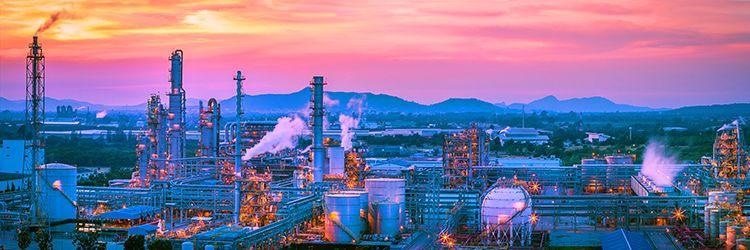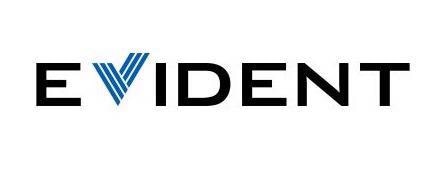In many inspection applications, such as pipelines that carry gas or other flammable substances, fires and explosions are major concerns. In terms of codes, standards, technical papers, and engineering design, no other aspect of industrial safety receives more attention.

Image Credit: Evident Corporation
Strict processes, regulations, and equipment requirements, including routine nondestructive testing, are often imposed within industries that deal with hazardous materials or environments. Hot work permits are even required by inspectors using standard flaw detectors in some locations.
Evident currently offers three instruments that conform to the requirements of the ATEX directive for use in potentially explosive atmospheres: the EPOCH™ 650 flaw detector, the BondMaster™ 600 multimode bond tester, and the NORTEC™ 600 eddy current flaw detector. Not only do these EX series instruments help save time and reduce costs, most importantly, they help to keep inspectors safe when working in certain hazardous environments.
What’s ATEX?
The acronym ATEX comes from the French ATmosphères EXplosibles (or explosive atmospheres).
Today, the two European Union directives for controlling explosive atmospheres are commonly referred to as ATEX. The first is Directive 99/92/EX, also known as ‘ATEX 137’ or the ‘ATEX Workplace Directive.’
For workers potentially at risk of explosive atmospheres, this directive regulates the minimum requirements for improving their health and safety protection. The second is Directive 94/9/EC, also known as ‘ATEX 9’ or ‘the ATEX Equipment Directive.’ In potentially explosive atmospheres, this directive regulates all equipment and protective systems intended for use, whether electrical or mechanical.
What's an Explosive Atmosphere?
Simply put, explosive atmospheres can be caused by flammable gases, mists, vapors, or combustible dust. If there is an ignition source, such as a spark, then these dangerous substances can explode when they mix with air. In the chemical, petrochemical, power generation, aviation, and mining industries, explosive atmospheres are of great concern. In some instances, a hot work permit or equipment that conforms to the ATEX directive may be required to complete a job.
Can Evident’ ATEX-Conforming Instruments Be Used in any Type of Explosive Atmosphere?
No. The ATEX directive requirements are complex. The parts of the ATEX directive to which the instrument conforms are clearly explained on the label. The EPOCH 650 Ex, BondMaster 600 Ex, and NORTEC 600 Ex instruments all conform to the requirements of the ATEX directive with the same restrictions.
What Do the Letters and Numbers on the Instrument’s ATEX Label Mean?
The restrictions for which the instrument can be used in explosive atmospheres are given on the label.

Image Credit: Evident Corporation
- CE: The instrument meets the safety, health, and environmental protection requirements of the European Economic Area
- Ex: The instrument is approved for use in explosive atmospheres
- II: Equipment group II—the instrument is not approved for use in mines
- 3: Product category 3—the instrument is approved for use in areas where flammable material is not frequently present or is only present for short periods of time
- G: Product category G—the instrument is approved for use in gas, vapor, or mist-type explosive atmospheres, but not dust
- Ex ic: Intrinsic safety protection concept in normal operation (IEC Protection Level c)
- IIA: Gas group IIA, propane-type gases, including acetone, petroleum fuel, ammonia, ethane, methanol, carbon monoxide, propane, n-butane, ethanol, diesel fuel, kerosene, avgas, and ethyl nitrate
- T4: Temperature class T4; exposed instrument components cannot exceed 135 °C (275 °F)
- Gc: Equipment protection level Gc; applicable in environments where explosive gases are not frequently present or are only present for short periods
- IP54: International Protection level IP54; the instrument is protected from limited dust ingress and is protected from water spray from any direction
- -10 °C < T amb < 50 °C: Operating temperature range; EX instruments are rated for use in the previously specified hazardous environment from -10 °C to 50 °C (14 °F to 122 °F)
- EVIDENT 16.EP650: Product ATEX certificate designation
- X: Equipment is intended only for use in the specific conditions described on the label
Is There a U.S. Equivalent to ATEX?
The U.S. has a separate classification system based on the National Electric Code, but there is no direct equivalent.
How Does ATEX Compare to Intrinsically Safe or Explosion Proof?
Products designed for hazardous (explosive) areas are often described as intrinsically safe, meaning that the available electrical energy to non-incendiary levels is limited such that it is not possible for sparks that cause an explosive atmosphere to ignite to occur.
A term that is often improperly used to describe industrial equipment is explosion proof. For an enclosure to gain an explosion proof rating, it must be able to contain any explosion occurring within its housing and prevent sparks within the housing from escaping and igniting an explosive atmosphere surrounding the equipment.
When properly operated within the environmental conditions specified on the ATEX label, EX series instruments can be considered intrinsically safe and explosion proof. If the conditions under which the instruments conform to the requirements of the ATEX directive are not specified, then it would be inaccurate to say that EX instruments are intrinsically safe or explosion proof.
What’s the Difference Between ATEX, International Protection (IP) Rating, and the MIL-STD-810 Standard?
The letters IP followed by two numbers are the basis for the International Protection (also known as ‘Ingress Protection’) rating. The degree of protection against the intrusion of solids (like dust) is represented by the first number. The degree of protection against the intrusion of water is represented by the second. The higher the number (0–6 for solids and 0–8 for water), the higher the level of protection.
The approach for testing instruments for a variety of environmental stresses is specified by a U.S. military standard, MIL-STD-810. The instrument’s resistance to humidity, salt fog, vibration, shock, icing/freezing rain, and much more are tested through a series of methods with this standard.
Specifically geared toward an instrument’s suitability for use in explosive atmospheres, ATEX goes beyond these standards.
Are There Any Physical Differences Between a Standard Instrument and an ATEX Instrument?
The EX instruments are slightly bigger and heavier than their non-EX counterparts. Rather than plastic, they have an aluminum body. They also have a damage-resistant screen protector, and their rubber bumpers are a different color. Most importantly, EX series instruments work in the exact same way as the standard versions with the same features and functionality, providing results that can be trusted.
Where Can I Use Evident EX Instruments?
EX series instruments have been approved for use in environments where flammable propane-type gases (gas group IIA) are abnormally present at temperatures ranging from -10 °C to 50 °C. The EX instruments should not be used in atmospheres with explosive dust, environments where flammable gases are usually present, or mines.
How Do I Know if the Areas Where I Work Require the Use of an ATEX-Conforming Flaw Detector?
A thorough understanding of the site is required to determine the classification of a specific location. Before a decision can be made as to what classification it should be assigned, an exhaustive study of the site must be carried out. It is the responsibility of the local inspection authority to define the classification of a specific area.

This information has been sourced, reviewed and adapted from materials provided by Evident Corporation.
For more information on this source, please visit https://www.evidentscientific.com/en/